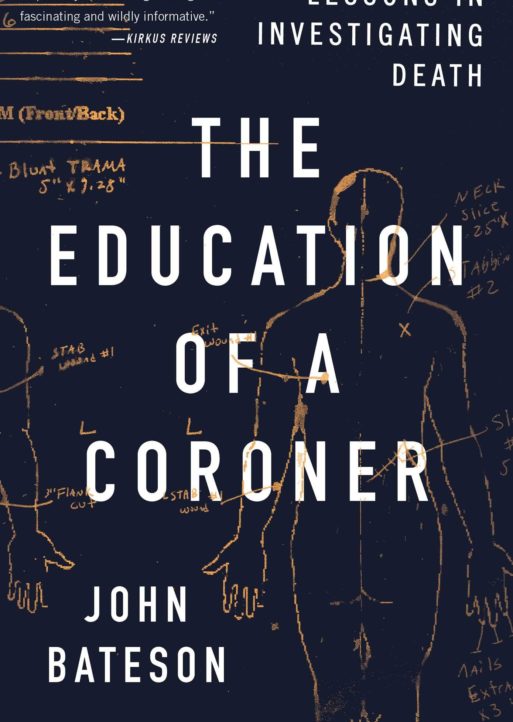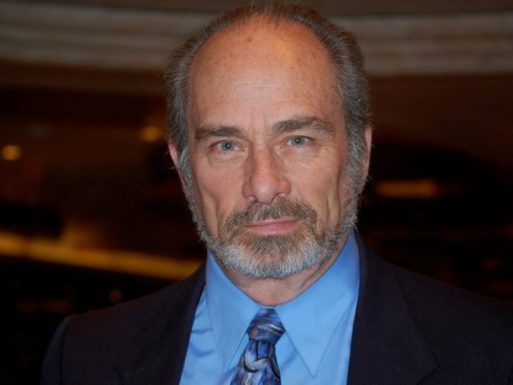 “The Education Of A Coroner: Lessons In Investigating Death” by John Bateson tells the fascinating story of Ken Holmes’ career with the Marin County Coroner’s Office, where he worked for 36 years. He began his career there as a death investigator in 1975 and eventually became a three-term elected coroner.
“The Education Of A Coroner: Lessons In Investigating Death” by John Bateson tells the fascinating story of Ken Holmes’ career with the Marin County Coroner’s Office, where he worked for 36 years. He began his career there as a death investigator in 1975 and eventually became a three-term elected coroner.
Marin is the affluent county just to the north of San Francisco, California, on the other side of the Golden Gate Bridge. There are no major urban centers within the county itself. It is bordered by the Pacific Ocean to the west, and the San Francisco Bay to the south and east. To the north lies the beginning of wine country. Marin consists mainly of small towns, rolling hills, factories and coastline. It is an area of pristine natural beauty, and is home to many of Northern California’s natural wonders, including Muir Woods, Mount Tamalpais and Point Reyes National Seashore, among many other natural wonders.
Marin is also a very wealthy county. Professional athletes, rock stars, movie stars, business executives and the like call Marin home. There are pockets of poverty, as well, and Marin is also where the world-famous San Quentin Prison is located.
It is in this area of beautiful landscapes and people from all ends of the socio-economic spectrum that Ken Holmes worked. Part biography and part true-crime thriller, “The Education Of A Coroner” details in length many of the fascinating, bizarre, gruesome, heartbreaking, intricate and puzzling cases Holmes worked on throughout his storied career with the Marin County Coroner’s Office.
An Interest Begins
Bateson begins “The Education Of A Coroner” with a brief introduction to Holmes and his work: who he is, where he’s from and how he ultimately got into the business of examining dead bodies. Holmes recalls that he was very interested with anatomy at a young age.
“I was the kid who tried to figure out how that bird died, or what happened to the jackrabbit,” Holmes says. “When I first started hunting, at age eight, I was as interested in what happened to the bullet as I was in getting the animal ready to eat.”
Holmes then describes the first time he skinned a jackrabbit. “Once I skinned it I could see the shoulder and the foreleg,” he says, “and I could work the shoulder and I could see the shoulder bone rotating in the socket…I was struck by the fact that it was so simple yet worked so well.”

Ken Holmes worked at the Marin County Coroner’s Office for 36 years
Credit: patch.com
Fast forward a few years, and after high school Holmes got an apprenticeship at a funeral home. It was during his time there that Holmes learned two important things about himself that would ultimately serve him well in his future career path.
First, he was not fazed by death. Holmes was fascinated when he watched his first autopsy, and asked the doctor so many questions that Holmes’ boss asked him to leave the doctor alone.
“[The autopsy] was a mesmerizing experience,” says Holmes, “and I couldn’t get enough of it.” Holmes watched autopsies during his apprenticeship whenever he could, always engaging, asking questions and listening to the doctor.
“The result was that I began to develop a good grasp of medical terminology when I was still in my teens,” he says.
During this apprenticeship, Holmes also learned that he has a great deal of compassion. This would prove to be invaluable during his time spent with the coroner’s office. Indeed, the importance of compassion in this line of work is a recurring topic throughout “The Education Of A Coroner.”
“From the beginning,” Holmes says, “I enjoyed working with families. I felt comfortable around them, and they, in turn, were grateful for my help in making funeral arrangements.”
Suicide, Homicide, Accident, Natural or Undetermined
Much of the book details specific cases that Holmes was involved with during his career. One distinction made early in the book is the difference between the “cause” of a person’s death and the “manner” of death.
The cause of death is the physical reason why somebody died. A gunshot wound to the head, anaphylactic shock due to an allergic reaction, a heart attack, inhalation of a toxic gas, etc. are all examples of a cause of death.
Manner refers to the way in which a person died. In the United States there are only five manners of death: suicide, homicide, accident, natural or undetermined. Natural deaths, those caused by disease, are by far the most common, and comprise nearly 60 percent of the deaths a coroner’s office deals with. If the manner of death is not natural, all cases are initially treated as homicides, even if there is a suicide note present.
Many of the anecdotes and the lengthy stories included in the book run the gamut of both causes and manners — far too many to list here.
A few of the cases were not solved at the time the bodies were found, but were eventually resolved years later (some, multiple decades later). A number of the stories have so many characters and subsequent backstories involved that even the best Hollywood writers could not come up with more dramatic tales. There are even a few serial killings mentioned, such as those perpetrated by the Mt. Tamalpais Trailside Killer.
More Than Enthralling Tales
As mentioned, a substantial portion of “The Education Of A Coroner” (it runs 317 pages) details Holmes’ career, i.e. what he learned on the job and many of the cases he worked on. Some of the stories are quite gruesome in detail, some downright horrifying.

Author John Bateson
Credit: marinmagazine.com
Despite the inevitable discussions of murders, suicides and “Who done its?” “The Education Of A Coroner” is also very educational. For instance, the book details what a coroner is, and what their jobs entail. A hint: it’s not exactly what shows like “CSI” and “NCIS” make it out to be.
Descriptions of embalming, fingerprinting, bodily decomposition and autopsies can all be found buried in the pages. The importance of death certificates, differences between (and intricacies of) the positions of county coroners and medical examiners, and the world of San Quentin are all explored as well.
“The Education Of A Coroner” is a captivating read. At times I found myself wincing while reading some of the crime-scene descriptions. Nevertheless, the way in which Bateson writes keeps you locked in and eager to continue.
Holmes himself is a fascinating character. He is clearly very compassionate and charismatic, and I can only think that families of the people who have died must have thoroughly appreciated the way he dealt with their situations. Bateson’s descriptions and Holmes’ own testimony of how he consoled the families and offered his unwavering support to them are heartwarming, considering the dire reason for his being with the families in the first place.
They are a misunderstood bunch, but Bateson puts into perspective the importance of coroners in our society: “Coroners deal with death, but their purpose is to find answers for the living.”

 “The Education Of A Coroner” by John Bateson
“The Education Of A Coroner” by John Bateson


 Recovering Cremation Remains After the Los Angeles Fires
Recovering Cremation Remains After the Los Angeles Fires
 “As Tears Go By” by Marianne Faithfull
“As Tears Go By” by Marianne Faithfull















